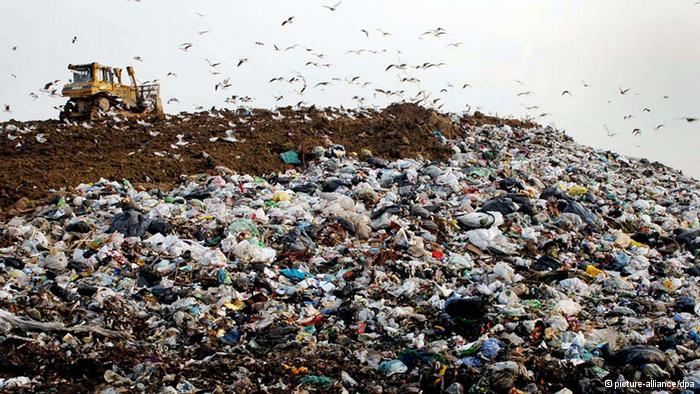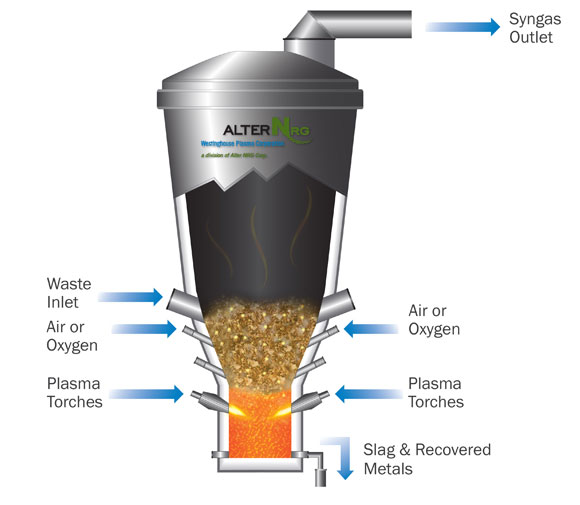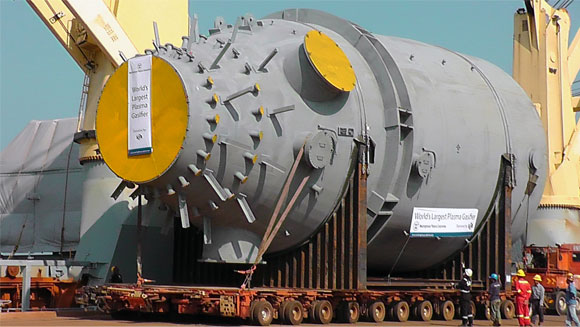The ever-growing population and increased consumption brought us gigantic mountains of waste. In addition to this, there are old time “legacy tasks” in the form of overfilled landfills. Up to now it is usual to dispose the waste in incinerators. A solution, however, which has some disadvantages.
The filter system, required for such plants, needs an investment amount, nearly the same as the one for the plant itself. Using the technology of incineration, poisonous residues accumulate in the process, which must be end-stored as hazardous waste. This applies to the filter cake as well as ashes and slags. This method only reduces the amount of garbage, but does not eliminate the hazards that go out from it.

Measured by the calorific value of the highly organic matter containing waste, the efficiency of the energy, obtained by combustion, is not optimal.
Timely Approaches for final disposal of waste therefore rely on technologies, which have been used for a longer time for the production of energy from coal or lignite. Gasification, international and official classified as the best available technology (BAT)
The most actual technology for the final disposal of any kind of waste, counting as sustainable, is the Plasma gasification or plasma-assisted gasification
It can be used to convert carbon-containing materials to synthesis gas that can be used to generate power and other useful products, such as transportation fuels. In an effort to reduce both the economic and environmental costs of managing municipal solid waste, (which includes construction and demolition wastes) a number of cities are working with plasma gasification companies to send their wastes to these facilities. One city in Japan gasifies its wastes to produce power. In addition, various industries that generate hazardous wastes as part of their manufacturing processes (such as the chemical and refining industries) are using plasma gasification as a cost-effective means of managing those wastes streams.
The organics are decomposed into their original constituents at extremely high temperatures in a fluidized bed process. Because of the process, synthetic gas and mineral slag are produced. In order to clean the resulting syngas of possible toxins, such as dioxins or furans, and to compress the residues, a plasma burner is connected downstream to the process.
In the gasification process, no harmful residues are generated, but synthetic gas with a high calorific value and an optimal degree of purity on the one hand and mineral, glassy slags, which is used as building material. The slag durable can encapsulate even radioactive parts.
This method of disposal of waste is already successfully used in the USA, Canada, Japan and Korea. Europe is still somewhat reserved, but this does not have technical reasons, but economic. As the European utilization companies are private owned, the funds used for the financing of incineration plants are to be amortized first

Plasma gasification provides a number of key benefits:
- It unlocks the greatest amount of energy from waste
- Feedstock can be mixed, such as municipal solid waste, biomass, tires, hazardous waste, and car shredder waste
- It does not generate methane, a potent greenhouse gas
- It is not incineration and therefore doesn’t produce leachable bottom ash or fly ash
- It reduces the need for landfilling of waste
- It produces syngas, which can be combusted in a gas turbine or reciprocating to produce electricity or further processed into chemicals, fertilizers, or transportation fuels—thereby reducing the need for virgin materials to produce these products
- It has low environmental emissions
For more information, please contact us.



 FACEBOOK
FACEBOOK